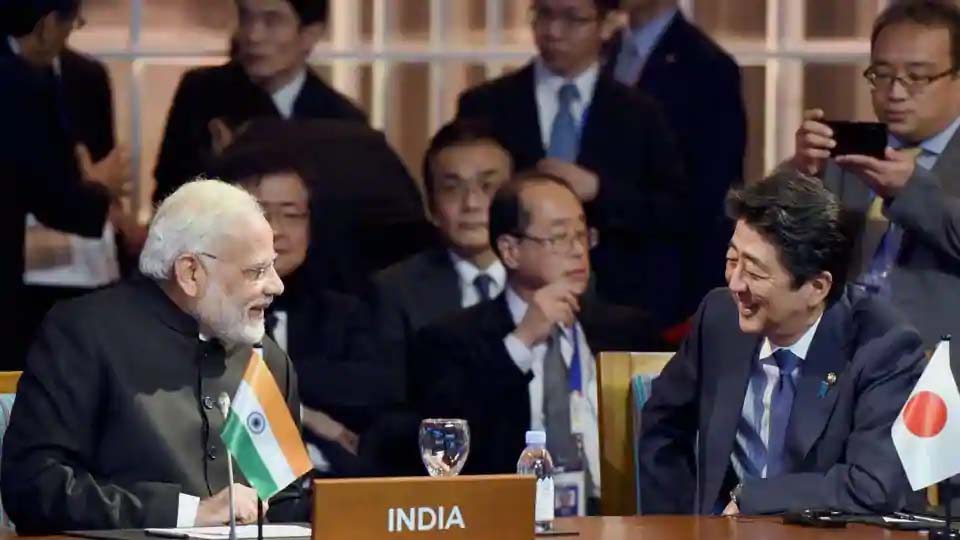Japan on Friday backed India in its border standoff with China, saying it opposes any “unilateral attempt to change the status quo” on the Line of Actual Control (LAC), even as New Delhi stepped up diplomatic efforts to gain support from its partners in the world community.
Japanese ambassador Satoshi Suzuki tweeted about his country’s support following a conversation with India’s foreign secretary Harsh Shringla. People familiar with developments said on condition of anonymity that Shringla had also briefed either the envoys or his counterparts from the US, Russia, France and Germany earlier.
Suzuki’s remarks came after several meetings at the diplomatic and military levels between India and China failed to break the impasse along the LAC and even as Prime Minister Narendra Modi toured the Ladakh sector to meet troops and to assess the situation.
The Japanese envoy also backed the Indian government’s efforts to achieve a peaceful resolution of the standoff that became public in May.
“Had a good talk with FS Shringla. Appreciated his briefing on the situation along LAC, including GOI’s policy to pursue peaceful resolution. Japan also hopes for peaceful resolution through dialogues. Japan opposes any unilateral attempts to change the status quo,” Suzuki tweeted.
In recent weeks, Shringla has held virtual consultations with his Germany counterpart Miguel Berger on June 26 and with his French counterpart François Delattre on June 29. The situation along the LAC and the build-up of Chinese troops had figured in these discussions that focused on the regional and global situations, the people cited above said.
Shringla has also briefed the US and Russia on the border standoff. Russia was among the first of India’s strategic partners to be taken into confidence when Shringla met Russian ambassador Nikolay Kudashev on June 2.
Following the violent face-off with Chinese troops in Ladakh sector on June 15 that left 20 Indian soldiers dead, US ambassador Kenneth Juster conveyed his condolences to “the families of the soldiers who were lost at Galwan” and said their “bravery and courage will not be forgotten”.
On June 19, the Japanese ambassador too had conveyed his country’s condolences to the Indian people and the families of the 20 Indian soldiers who “lost their lives in the line of duty at Galwan Valley”.
Amid the border tensions, training vessels of the Japan Maritime Self-Defense Force conducted a minor exercise with two Indian warships in the Indian Ocean on June 27. The deputy chief of the Japanese mission in New Delhi, Toshihide Ando, said this was the 15th exercise between the two sides in three years.
“This is a goodwill training to promote mutual understanding and trust with the Indian Navy,” he said. “The content of this exercise is tactical and communications training with no specific scenario.”
At the height of the 2017 India-China standoff at Doklam, Suzuki’s predecessor Kenji Hiramatsu had also strongly backed New Delhi’s position on the matter and said no country should use force to alter the status of Doklam, located at the tri-junction of India, Bhutan and Tibet.
At the time, Japan was the first country to back India’s position on the standoff, which ended after 73 days.
Japan too has been having its own problems with China over the disputed Senkaku Islands in the East China Sea. On Friday, Japan strongly protested to China about the intrusion by two China Coast Guard ships into its territorial waters near the islands.
The two Chinese vessels entered Japanese waters on Thursday evening and remained in the area, which is administered by Japan but claimed by China. Chief cabinet secretary Yoshihide Suga said, “We will continue to deal with the matter calmly and resolutely.”
This was the first time since June 22 that a Chinese ship had entered Japanese territorial waters around the Islands. China sent its ships to waters around the islands for 80 days in a row, the longest streak since Japan put them under state control in September 2012.
Experts said India’s diplomatic outreach to its partners in the world community was intended to send out a message to China that its behaviour wasn’t acceptable.
Nitin Pai, director of The Takshashila Institution, said: “These conversations have followed the outcome of the military level talks with China. It was important to take the dialogue with the Chinese to this point and then bring in the international community, otherwise these diplomatic conversations would have been out of sync.
“These conversations convey a sense of solidarity and that India’s partners also accept that China is out of place.”

